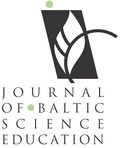THE CONTRIBUTION OF TEACHER PREPARATION ON GRADE 8 STUDENTS’ SCIENCE ACHIEVEMENT IN TIMSS: A COMPARATIVE STUDY BETWEEN MALAYSIA AND SINGAPORE
| Title | THE CONTRIBUTION OF TEACHER PREPARATION ON GRADE 8 STUDENTS’ SCIENCE ACHIEVEMENT IN TIMSS: A COMPARATIVE STUDY BETWEEN MALAYSIA AND SINGAPORE |
| Publication Type | Journal Article |
| Year of Publication | 2018 |
| Authors | Lay, YF, Chandrasegaran, AL |
| Journal | Journal of Baltic Science Education |
| Volume | 17 |
| Issue | 4 |
| Start Page | 576-589 |
| Pagination | Continuous |
| Date Published | August/2018 |
| Type of Article | Original article |
| ISSN | 1648-3898 |
| Other Numbers | E-ISSN 2538-7138 |
| Keywords | career satisfaction, confidence in teaching science, Science Achievement, teacher preparation, TIMSS |
| Abstract | The ultimate aim of this research was to explore the contribution of teacher preparedness or readiness (in terms of their academic background, confidence in teaching science and career satisfaction) towards the achievement in science among Malaysian and Singaporean eighth-graders. The TIMSS 2011 international assessment of student achievement at the eighth grade comprises written tests together with sets of questionnaires that gather information on the educational and social contexts for achievement in science. The TIMSS 2011 science achievement scale was used to gauge Grade 8 students’ science achievement. Confidence in Teaching Science Scale and Teacher Career Satisfaction Scale was used to explore science teachers’ confidence in teaching science and career statisfaction, respectively. Data were obtained from 5,733 Malaysian students and 5,927 Singaporean students who participated in the TIMSS 2011 study using two-stage random sample design.Higher science achievement among Singaporean eighth grade students was related to teachers having more teaching experience, being confident in science teaching, and being satisfied with careers . However, these findings were not evident in Malaysia. The findings of such a research may help science educators and policy makers to identify and nurture the strong learning prerequisites of early adolescents in different education systems. |
| URL | http://oaji.net/articles/2017/987-1533708650.pdf |
| DOI | 10.33225/jbse/18.17.576 |
| Refereed Designation | Refereed |
| Full Text |
